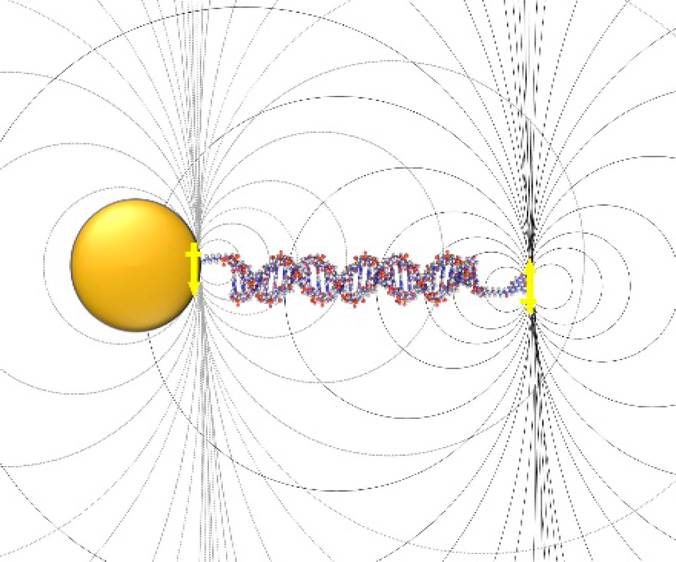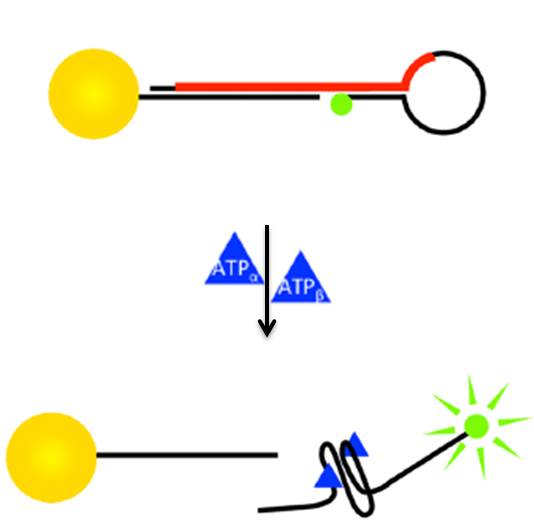Energy Efficency: Solid State Lighting

The development of nano-spinels represents a scalable approach for formation of earth abundant LED pumped phosphors that are soluble in organics for processing, have improved internal conversion efficiencies, and can achieve 200 Lm/W. The earth abundant spinel lattice not only reduces the cost of the host matrix, which accounts for > 90% of the material, but also provides chemical, thermal, and ionization stability while optimizing spectral performance. The improved performance is due to optimization of the distance from sensitizer to dopant to ensure efficient energy coupling between the singlet and triplet state of the molecular sensitizer and the Ln(III) levels through a Dexter energy transfer. In the packaged LED, the white light is produced by blending the line spectra of the lanthanide ion for blue (Ce), green (Tb, Er) and red (Eu, Sm). Nanoscale phosphors reduce material content, control type and density of defects, provide solvent soluble material, and a means to reduce lanthanide content.
Energy Efficency: Magnetic Materials

The magnetic interactions that occur at the nanoscale allow for exotic phenomena to occur which have the ability to enhance the magnetic properties of a material above those observed in the bulk material. One such interaction that we are pursuing is exchange-spring behavior, which occurs when hard and soft magnetic materials are layered with one-another on the nanoscale (at or below the single domain size). This type of exchange-coupling is vital for the future of sustainable technologies, as it allows for the reduction of rare earth metals (Nd, Sm, and Dy -- which become increasingly more expensive every year) in the magnetic components of electric motors and turbines. Through use of the microwave reactor, we can control the size of both the core and shell of the materials, allowing for high tunability of the final magnetic properties.
Energy Efficiency(Optical Rulers): Biophysics

Energy Transfer of an excited state donor to an accepter has long been used measure distances on the nanoscale. Förster Resonance Energy Transfer (FRET) has led the field in use but is typically limited to 80 Å, by utilizing a fluorescent dye donor and an accepting dipole whether that be another dye or a black hole quencher. Nanometal Surface Energy Transfer (NSET) has extended the reach of the molecular ruler to distances exceeding
400 Å, by replacing the accepting molecule with a metal nanoparticle. The extension can be attributed to an enhanced coupling of the electromagnetic field of the dipole to that of the metal nanoparticle. NSET accurately predicts the extent of this coupling by incorporating the size dependent optical and electronic properties of the accepting nanoparticles. Our group has shown the usefulness of NSET as a molecular ruler by observing conformational changes in Hammerhead RNA and is currently investigating uses in small molecule detection utilizing aptamers.
Energy Efficiency(Optical Rulers): Aptamers

Aptamers are nucleic acid sequences with strong, selective affinities for binding target molecules. They have become popular tools in nanotechnology as they offer better selectivity than anti-bodies while maintaining high levels of target-bound stability. More importantly, nucleic acid aptamer strands are easily modifiable, making them applicable to a variety of chemical instrumentations and techniques. Here in the Strouse lab, we are interested in employing these aptamers in designing optical sensors for target detection. We construct molecular beacon-style optical probes for small-molecule detection using the aptamers appended to gold nanoaprticles. These concentration-based optical assays combine the distance-based theory for energy transfer, NSET, with conformationally-active aptamers. In our work with the ATP DNA aptamer, we show that this molecular-beacon based approach is useful for spanning several magnitudes of target concentration detection (pM-mM) by relocating the specific aptamer sequence in the stem-loop configuration. In addition, by studying these systems optically, site-specific binding information is available that is inaccessible by NMR, EPR, electrochemical detection, etc. The future of this work entails multiple flourescent-dye labels on the aptamers to triangulate distal changes in the nucleic acid's conformation.
Back to Research